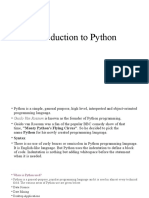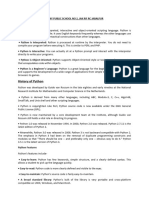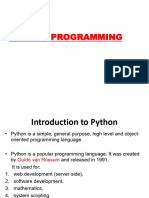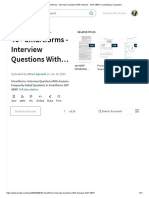0% found this document useful (0 votes)
7 views6 pagesLecture 1-2
Python is a high-level, interpreted programming language created by Guido Van Rossum, known for its simplicity and versatility in application development. It supports Object Oriented Programming, has a large standard library, and is open source, making it suitable for various applications including web and desktop GUI development. Python features easy-to-learn syntax, automatic memory management, and a dynamic typing system, along with specific naming conventions for variables and constants.
Uploaded by
jeenamukesh33Copyright
© © All Rights Reserved
We take content rights seriously. If you suspect this is your content, claim it here.
Available Formats
Download as PDF, TXT or read online on Scribd
0% found this document useful (0 votes)
7 views6 pagesLecture 1-2
Python is a high-level, interpreted programming language created by Guido Van Rossum, known for its simplicity and versatility in application development. It supports Object Oriented Programming, has a large standard library, and is open source, making it suitable for various applications including web and desktop GUI development. Python features easy-to-learn syntax, automatic memory management, and a dynamic typing system, along with specific naming conventions for variables and constants.
Uploaded by
jeenamukesh33Copyright
© © All Rights Reserved
We take content rights seriously. If you suspect this is your content, claim it here.
Available Formats
Download as PDF, TXT or read online on Scribd
/ 6


























































































